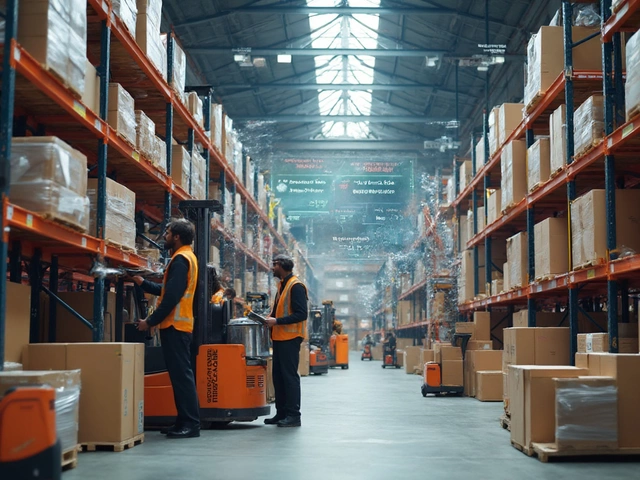Logistics System: How It Works and Which Tools Fit Your Business
When you hear the word "logistics system" you might picture trucks, warehouses, and a pile of software. In reality it’s just the set of tools and processes that move goods from point A to point B efficiently. Whether you run a small online shop or manage a big distribution network, the same basic pieces apply: planning, moving, storing, and tracking.
Think of the system as a puzzle. Each piece – demand forecasting, warehouse management, transportation routing, and last‑mile delivery – slots together to create a smooth flow. If one part is weak, the whole picture gets blurry. That’s why many businesses upgrade their software stack to keep everything in sync.
Key Parts of a Modern Logistics System
Warehouse Management System (WMS) handles inventory location, picking, and packing. A good WMS tells you exactly where an item lives, how many are left, and the fastest way to pull it for shipment. This saves time and cuts errors, especially when orders spike during sales.
Transportation Management System (TMS) plans routes, books carriers, and optimizes loads. It can compare UPS, FedEx, DHL or local couriers in real time, picking the cheapest or fastest option based on weight, size, and delivery window.
Demand Planning & ERP Integration give you a heads‑up on how much stock you’ll need. By linking sales forecasts to your WMS and TMS, you avoid overstocking or running out of popular items. Many ERP platforms now bundle these functions, so you don’t have to juggle separate tools.
Last‑Mile Delivery Tools focus on that final stretch to the customer’s door. They provide real‑time tracking, dynamic routing for drivers, and options like curbside or indoor drop‑off. The goal is to keep the customer informed and happy while keeping costs low.
Choosing the Right Software for Your Needs
Start with a quick inventory of what you already have. Do you use spreadsheets for stock? Do you manually call carriers for each shipment? List the pain points – missed pickups, wrong inventory counts, high shipping costs – and match them to the software features that solve them.
Next, think about scale. A tiny WMS may be enough for a shop that ships a few dozen parcels a day, but a larger operation will need automation, barcode scanning, and maybe AI‑driven slotting. Look for platforms that grow with you, offering modular add‑ons rather than a one‑size‑fits‑all bundle.
Finally, test the integration. Your logistics system will sit between your e‑commerce platform, accounting software, and carrier APIs. The smoother the connections, the fewer manual steps you’ll need. Request a trial, run a few real orders, and watch how quickly data flows from order to delivery.Bottom line: a solid logistics system is built on four pillars – warehouse, transportation, demand planning, and last‑mile execution. Pick tools that talk to each other, match your current volume, and leave room to grow. When those pieces click, you’ll see faster shipments, lower costs, and happier customers – all without breaking a sweat.
February 20, 2025
Evelyn Wescott
0 Comments
Discover what a logistics system looks like in action through a detailed example. Learn about key components, how this technology optimizes supply chain processes, and the benefits of implementing such a system. Find out why businesses are investing in these systems to enhance efficiency. Understand the role of automation and real-time data tracking.




